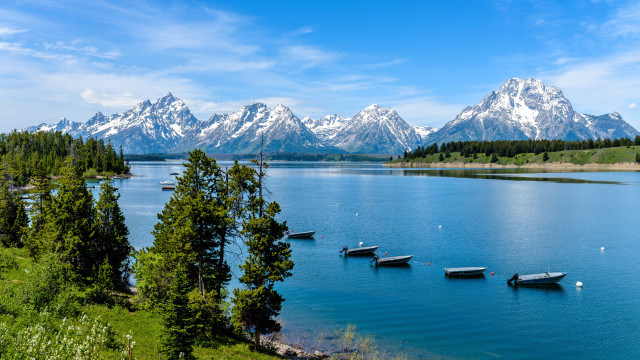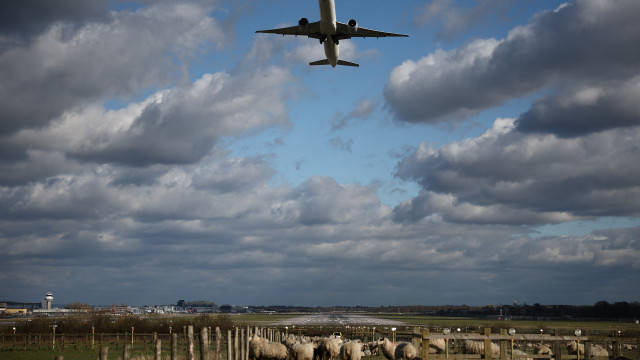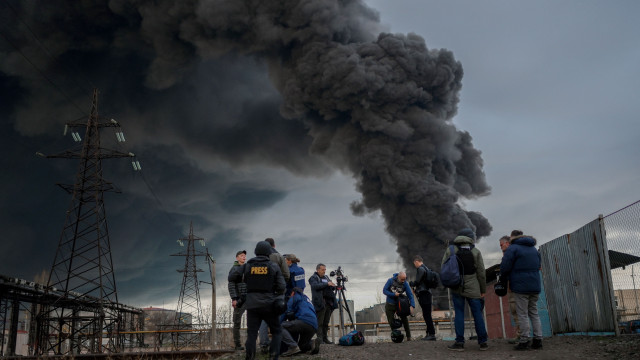





























© Getty Images
0 / 30 Fotos
How are mountains formed?
- Mountains can come into existence in a number of ways, but they always involve plate tectonics, or the shifting and collision of the massive plates that move just beneath the earth's surface.
© Shutterstock
1 / 30 Fotos
How are mountains formed?
- Volcanic mountains are formed when tectonic shifts push molten magma to the surface, where it then cools and solidifies. Japan's Mount Fuji is an example of this.
© Shutterstock
2 / 30 Fotos
How are mountains formed?
- The most common type of mountain is called a fold mountain, which is caused by the collision of two tectonic plates. The softer, less dense material is pushed up to the surface to form mountain ranges and plateaus, while the more dense material is pushed down deeper into the earth's mantel. This is how ranges such as the Himalayas and the Rockies were formed.
© Shutterstock
3 / 30 Fotos
How do geologists age mountains?
- Determining the age of mountains was a long-impossible feat that stumped even the most accomplished scientists and geologists. That is until around the 17th century, when the field of stratigraphy began to rise to prominence.
© Shutterstock
4 / 30 Fotos
How do geologists age mountains?
- Using stratigraphy, which is the study of the strata, or layers, of rock formation, the age of mountains can be determined by comparing these strata to one another to determine when a given mountain took its current shape, based on the materials and sediments present. So, thanks to geologists, we now know which ranges on earth are the oldest.
© Shutterstock
5 / 30 Fotos
Massif Central
- One of the oldest mountain and highland regions in Europe, the Massif Central of southeastern France is at least 60 million years old, assumed to be formed when the European and African tectonic plates once collided.
© Shutterstock
6 / 30 Fotos
Massif Central
- While entirely dormant today, the widespread area is dotted with around 450 extinct volcanoes that were all formed during the massive, ancient clash of the continents.
© Shutterstock
7 / 30 Fotos
Aravalli Range
- The oldest mountain range in India, and one of the oldest in the world, the Aravalli Range stretches 430 miles (some 690 km) across southwestern India.
© Shutterstock
8 / 30 Fotos
Aravalli Range
- The Aravallis are believed to date back to the Proterozoic era, making them around 350 million years old. Evidence of some of the earliest civilizations on the Indian subcontinent lay in the lush Aravalli mountains and foothills.
© Shutterstock
9 / 30 Fotos
Blue Ridge Mountains
- The Blue Ridge Mountains, arguably the most beautiful stretch of the North American East Coast's Appalachian Mountains, is also the oldest stretch, at 1.2 billion years old.
© Shutterstock
10 / 30 Fotos
Blue Ridge Mountains
- True to their name, the Blue Ridge Mountains really do glow blue when observed from a distance. This is because of a particular hydrocarbon called isoprene that is emitted by the beautiful oak and aspen trees. When viewed from a distance, this hydrocarbon appears as the unique, dreamlike blue haze that surrounds the Blue Ridge Mountains.
© Shutterstock
11 / 30 Fotos
Mount Pilanesberg
- Many of the earth's oldest mountains rest in South Africa, and one of these is Mount Pilanesberg. The oldest volcanic mountain formation in Africa, and one of the oldest in the world, Mount Pilanesberg is 1.2 billion years old.
© Public Domain
12 / 30 Fotos
Mount Pilanesberg
- Mount Pilanesberg has been inactive for quite some time, with its most recent eruption occurring around 1,200 million years ago. Numerous platinum mines operate at the base of the mountain.
© Shutterstock
13 / 30 Fotos
St. Francois Mountains
- The St. Francois Mountains that run through the otherwise mostly flat prairie state of Missouri are the oldest volcanic mountains in the United States, dating back nearly 1.5 billion years.
© Shutterstock
14 / 30 Fotos
St. Francois Mountains
- While the St. Francois Mountains are quite modest in stature, with the highest peak resting only 1,772 feet (540 m) above sea level, the beautiful igneous rock formations that seem to melt down its slopes make this range a popular destination for outdoor enthusiasts.
© Shutterstock
15 / 30 Fotos
Black Hills
- The Black Hills of South Dakota and Wyoming have been considered holy by a number of Native American tribes since the beginning of human settlement in the area.
© Shutterstock
16 / 30 Fotos
Black Hills
- These fold mountains, with their characteristic abrupt and dramatic rock formations that seem to burst from the earth, are 1.8 billion years old, making them the oldest mountains in North America.
© Shutterstock
17 / 30 Fotos
Guiana Highlands
- At two billion years old, the Guiana Highlands range are not only the oldest mountains in South America, but in all of the Americas from Canada to Chile.
© Shutterstock
18 / 30 Fotos
Guiana Highlands
- Situated at the northern tip of the continent, the Guiana Highlands stretch 1,200 miles (1,930 km) across Venezuela, the Guianas, Northern Brazil, and southern Colombia.
© Shutterstock
19 / 30 Fotos
Magaliesberg
- Known simply as the Magaliesberg, this modest and beautiful range is located in the northernmost tip of South Africa and was once partially submerged, back in the days of Pangea.
© Shutterstock
20 / 30 Fotos
Magaliesberg
- The Magaliesberg are about 2.3 billion years old, and are a treasure to nature enthusiasts and conservationists around the world. Southward-facing quartzite cliffs and pristine waterfalls make the Magaliesberg a magnificent reminder of the earth's ancient past.
© Shutterstock
21 / 30 Fotos
Karijini Range
- The Karijini Range in Australia is more commonly referred to in modern times as the Hamersley Range, named after the wealthy Australian colonialist who funded the expedition that led to the European discovery of the mountain range.
© Shutterstock
22 / 30 Fotos
Karijini Range
- The Karijini Range is the second oldest range in the world, dating back 3.4 billion years ago. Located in Australia's North West, these mountains are rich in iron, and for a time produced about 90% of the iron for the entire country.
© Shutterstock
23 / 30 Fotos
Waterberg Mountains
- The Waterberg Mountains in northern South Africa stretch over 90 miles (150 km) from east to west, and are a mind-boggling 2.7 billion years old. The range is a UNESCO-protected biosphere.
© Shutterstock
24 / 30 Fotos
Waterberg Mountains
- Scattered throughout the Waterberg Mountains are remnants of the very beginnings of human history, including cave art that dates back to the Stone Age. Some experts also believe this was the birthplace of some of modern humans' earliest ancestors.
© Shutterstock
25 / 30 Fotos
Barberton Greenstone Belt
- The Barberton Greenstone Belt in South Africa, traditionally known as the Makhonjwa Mountains, take the cake as the oldest mountain range in the world. These fold mountains are thought to have slowly burst from the earth around 3.6 billion years.
© Shutterstock
26 / 30 Fotos
Barberton Greenstone Belt
- After billions of years of wind and rain erosion, the peaks of the Greenstone Belt no longer scratch the sky as they once did. Today, the highest point in the range reaches over 5,900 feet (1,800 meters) above sea level.
© Shutterstock
27 / 30 Fotos
Himalayas
- Now that we've had a look at the oldest mountain ranges in the world, what about the youngest? The youngest, and by far the tallest, mountain range in the world, is the awe-inspiring Himalayas of South Asia.
© Shutterstock
28 / 30 Fotos
Himalayas
- The Himalayas were formed around 40 million years ago by the dramatic and catastrophic collision of the Indian and Eurasian landmasses. These mountains are so young, in fact, that they are still growing taller, by a rate of nearly half an inch (2.5 cm) a year. Sources: (World Atlas) (Oldest.org) (National Geographic)
© Shutterstock
29 / 30 Fotos
© Getty Images
0 / 30 Fotos
How are mountains formed?
- Mountains can come into existence in a number of ways, but they always involve plate tectonics, or the shifting and collision of the massive plates that move just beneath the earth's surface.
© Shutterstock
1 / 30 Fotos
How are mountains formed?
- Volcanic mountains are formed when tectonic shifts push molten magma to the surface, where it then cools and solidifies. Japan's Mount Fuji is an example of this.
© Shutterstock
2 / 30 Fotos
How are mountains formed?
- The most common type of mountain is called a fold mountain, which is caused by the collision of two tectonic plates. The softer, less dense material is pushed up to the surface to form mountain ranges and plateaus, while the more dense material is pushed down deeper into the earth's mantel. This is how ranges such as the Himalayas and the Rockies were formed.
© Shutterstock
3 / 30 Fotos
How do geologists age mountains?
- Determining the age of mountains was a long-impossible feat that stumped even the most accomplished scientists and geologists. That is until around the 17th century, when the field of stratigraphy began to rise to prominence.
© Shutterstock
4 / 30 Fotos
How do geologists age mountains?
- Using stratigraphy, which is the study of the strata, or layers, of rock formation, the age of mountains can be determined by comparing these strata to one another to determine when a given mountain took its current shape, based on the materials and sediments present. So, thanks to geologists, we now know which ranges on earth are the oldest.
© Shutterstock
5 / 30 Fotos
Massif Central
- One of the oldest mountain and highland regions in Europe, the Massif Central of southeastern France is at least 60 million years old, assumed to be formed when the European and African tectonic plates once collided.
© Shutterstock
6 / 30 Fotos
Massif Central
- While entirely dormant today, the widespread area is dotted with around 450 extinct volcanoes that were all formed during the massive, ancient clash of the continents.
© Shutterstock
7 / 30 Fotos
Aravalli Range
- The oldest mountain range in India, and one of the oldest in the world, the Aravalli Range stretches 430 miles (some 690 km) across southwestern India.
© Shutterstock
8 / 30 Fotos
Aravalli Range
- The Aravallis are believed to date back to the Proterozoic era, making them around 350 million years old. Evidence of some of the earliest civilizations on the Indian subcontinent lay in the lush Aravalli mountains and foothills.
© Shutterstock
9 / 30 Fotos
Blue Ridge Mountains
- The Blue Ridge Mountains, arguably the most beautiful stretch of the North American East Coast's Appalachian Mountains, is also the oldest stretch, at 1.2 billion years old.
© Shutterstock
10 / 30 Fotos
Blue Ridge Mountains
- True to their name, the Blue Ridge Mountains really do glow blue when observed from a distance. This is because of a particular hydrocarbon called isoprene that is emitted by the beautiful oak and aspen trees. When viewed from a distance, this hydrocarbon appears as the unique, dreamlike blue haze that surrounds the Blue Ridge Mountains.
© Shutterstock
11 / 30 Fotos
Mount Pilanesberg
- Many of the earth's oldest mountains rest in South Africa, and one of these is Mount Pilanesberg. The oldest volcanic mountain formation in Africa, and one of the oldest in the world, Mount Pilanesberg is 1.2 billion years old.
© Public Domain
12 / 30 Fotos
Mount Pilanesberg
- Mount Pilanesberg has been inactive for quite some time, with its most recent eruption occurring around 1,200 million years ago. Numerous platinum mines operate at the base of the mountain.
© Shutterstock
13 / 30 Fotos
St. Francois Mountains
- The St. Francois Mountains that run through the otherwise mostly flat prairie state of Missouri are the oldest volcanic mountains in the United States, dating back nearly 1.5 billion years.
© Shutterstock
14 / 30 Fotos
St. Francois Mountains
- While the St. Francois Mountains are quite modest in stature, with the highest peak resting only 1,772 feet (540 m) above sea level, the beautiful igneous rock formations that seem to melt down its slopes make this range a popular destination for outdoor enthusiasts.
© Shutterstock
15 / 30 Fotos
Black Hills
- The Black Hills of South Dakota and Wyoming have been considered holy by a number of Native American tribes since the beginning of human settlement in the area.
© Shutterstock
16 / 30 Fotos
Black Hills
- These fold mountains, with their characteristic abrupt and dramatic rock formations that seem to burst from the earth, are 1.8 billion years old, making them the oldest mountains in North America.
© Shutterstock
17 / 30 Fotos
Guiana Highlands
- At two billion years old, the Guiana Highlands range are not only the oldest mountains in South America, but in all of the Americas from Canada to Chile.
© Shutterstock
18 / 30 Fotos
Guiana Highlands
- Situated at the northern tip of the continent, the Guiana Highlands stretch 1,200 miles (1,930 km) across Venezuela, the Guianas, Northern Brazil, and southern Colombia.
© Shutterstock
19 / 30 Fotos
Magaliesberg
- Known simply as the Magaliesberg, this modest and beautiful range is located in the northernmost tip of South Africa and was once partially submerged, back in the days of Pangea.
© Shutterstock
20 / 30 Fotos
Magaliesberg
- The Magaliesberg are about 2.3 billion years old, and are a treasure to nature enthusiasts and conservationists around the world. Southward-facing quartzite cliffs and pristine waterfalls make the Magaliesberg a magnificent reminder of the earth's ancient past.
© Shutterstock
21 / 30 Fotos
Karijini Range
- The Karijini Range in Australia is more commonly referred to in modern times as the Hamersley Range, named after the wealthy Australian colonialist who funded the expedition that led to the European discovery of the mountain range.
© Shutterstock
22 / 30 Fotos
Karijini Range
- The Karijini Range is the second oldest range in the world, dating back 3.4 billion years ago. Located in Australia's North West, these mountains are rich in iron, and for a time produced about 90% of the iron for the entire country.
© Shutterstock
23 / 30 Fotos
Waterberg Mountains
- The Waterberg Mountains in northern South Africa stretch over 90 miles (150 km) from east to west, and are a mind-boggling 2.7 billion years old. The range is a UNESCO-protected biosphere.
© Shutterstock
24 / 30 Fotos
Waterberg Mountains
- Scattered throughout the Waterberg Mountains are remnants of the very beginnings of human history, including cave art that dates back to the Stone Age. Some experts also believe this was the birthplace of some of modern humans' earliest ancestors.
© Shutterstock
25 / 30 Fotos
Barberton Greenstone Belt
- The Barberton Greenstone Belt in South Africa, traditionally known as the Makhonjwa Mountains, take the cake as the oldest mountain range in the world. These fold mountains are thought to have slowly burst from the earth around 3.6 billion years.
© Shutterstock
26 / 30 Fotos
Barberton Greenstone Belt
- After billions of years of wind and rain erosion, the peaks of the Greenstone Belt no longer scratch the sky as they once did. Today, the highest point in the range reaches over 5,900 feet (1,800 meters) above sea level.
© Shutterstock
27 / 30 Fotos
Himalayas
- Now that we've had a look at the oldest mountain ranges in the world, what about the youngest? The youngest, and by far the tallest, mountain range in the world, is the awe-inspiring Himalayas of South Asia.
© Shutterstock
28 / 30 Fotos
Himalayas
- The Himalayas were formed around 40 million years ago by the dramatic and catastrophic collision of the Indian and Eurasian landmasses. These mountains are so young, in fact, that they are still growing taller, by a rate of nearly half an inch (2.5 cm) a year. Sources: (World Atlas) (Oldest.org) (National Geographic)
© Shutterstock
29 / 30 Fotos
The surprising history of the oldest mountains in the world
Learn about the earth's ancient, stony giants
© Getty Images
Mountains are some of the oldest residents of our planet. Earth's ancient temples of strength and resilience, sometimes taking the form of massive jagged fingers reaching for the sky, other times gently rounded and rolling hills giving texture to the land's surface, have watched over the earth for millions of years before complex organisms began to develop. For instance, the Appalachian Mountains, today famous for their heavily forested slopes, are around 500 million years older than the first trees that ever sprouted from the earth. These ancient formations are not only beautiful, but also tell the story of the world in its earliest stages, stories worth telling and worth reading.
Intrigued? Read on to learn about the oldest mountain ranges in the world.
RECOMMENDED FOR YOU






















MOST READ
- Last Hour
- Last Day
- Last Week








